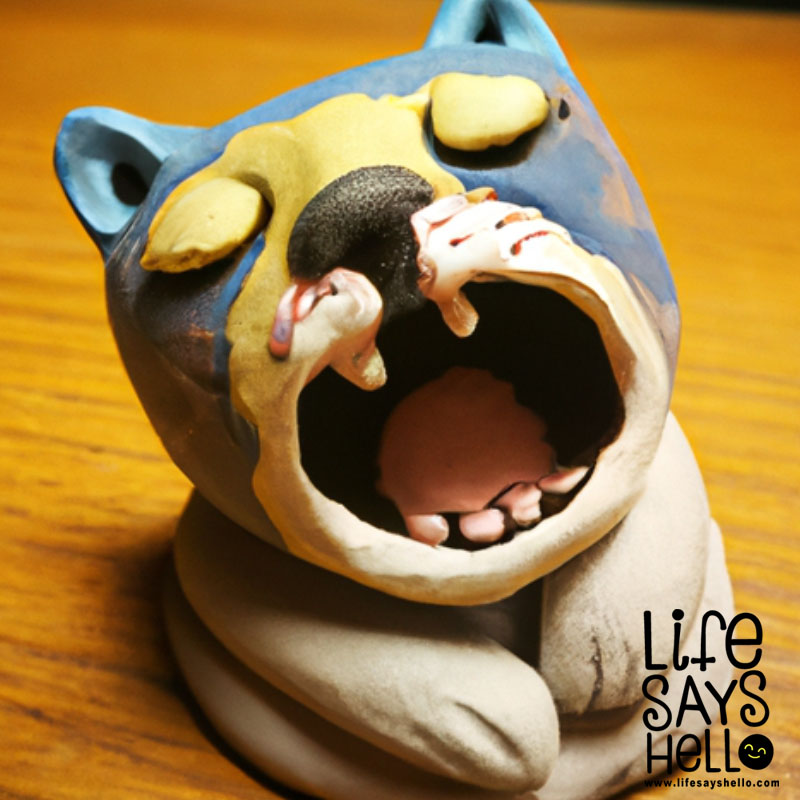The Complex History and Impact of the "Black Dog" Metaphor for Depression

Depression affects millions of people across the globe, but it often remains difficult to understand or articulate. Metaphors help provide a tangible representation of this complex mental health issue that can benefit those struggling with symptoms as well as caregivers and loved ones. One of the most well-known metaphors is that of the “black dog,” commonly used to describe the difficult-to-see aspects of depression. However, while this imagery has seen widespread use, its origins and implications are more complex than many realize.
The Murky Origins of Comparing Depression to a “Black Dog”
The “black dog” metaphor is often attributed to Winston Churchill, who famously stated: “I don’t like standing near the edge of a platform when an express train is passing through. I like to stand right back and if possible get a pillar between me and the train. I don’t like to stand by the side of a ship and look down into the water. A second’s action would end everything. A few drops of desperation.”
Churchill used the term “black dog” to describe and make sense of his own bouts of depression, which he called his “black dog days.” His openness about these struggles raised awareness and provided the world with a vocabulary to discuss mental health.
However, Churchill was far from the first to compare depression to this ominous canine figure. The metaphor has a murky origin but is frequently traced back to Samuel Johnson, creator of the first English dictionary. Johnson used the term in letters to friends to describe his depressive episodes, marking one of the earliest known usages of “black dog” as a metaphor for a mental health condition.
How the Metaphor Provides a Tangible Depiction of Depression
The imagery of a large, dark canine serves as a vivid representation of depression’s difficult-to-see aspects and pervasive impacts. For those experiencing symptoms or supporting loved ones, the metaphor can clearly identify depression’s characteristics, including:
Sadness - The “black dog” evokes gloom, sorrow, and despair. This represents the persistent low mood and sadness accompanying depression.
Lack of motivation - A large, intrusive dog stifling motivation mirrors the loss of interest, energy, and desire to engage in activities a person once enjoyed.
Persistence - A dog that follows its owner around depicts how depression repeatedly returns and interferes with everyday life.
Disruption - An unruly, intrusive dog aptly conveys how depression interrupts sleep, appetite, concentration, and other aspects of daily functioning.
Isolation - A person trying to avoid a bothersome dog represents the social withdrawal and loneliness depression often causes.
By transforming these abstract experiences into a concrete object, the metaphor provides a shared cultural shorthand for depression’s symptoms. For those diagnosed or caring for loved ones, this tangibility facilitates communication and understanding.
Controversy Regarding the Metaphor’s Implicit Associations
Despite its benefits, the “black dog” metaphor also raises understandable concerns about its intrinsic associations and implications. Specifically, the imagery of a dark, ominous hound invokes racist connotations that black equals bad.
Relating depression to a “black dog” reinforces societal prejudices and problematic associations between dark colors, animals, and evil. And while Churchill likely did not intend this meaning, that does not negate its harmful impacts.
In a society still grappling with deep-seated racism, metaphors equating “black” with “negative” perpetuate harmful biases. And considering people of color face additional barriers to mental healthcare, these associations only further stigmatize their struggles.
Many argue it is past time to either rethink this metaphor or eliminate it altogether. Some even suggest alternative depictions of depression, like a “dark fog” or “grey cloud” not intrinsically linked to race. Regardless, recognizing and countering its negative connotations is an essential step.
The Metaphor’s Enduring Presence in Art and Media
Despite valid criticisms, the “black dog” metaphor continues appearing in literature, songs, videos, and awareness campaigns. For example:
Matthew Johnstone’s book I Had a Black Dog uses this metaphor to illustrate his personal struggle and recovery from depression. The World Health Organization distributed it in campaigns combating mental health stigma.
The animation Living With a Black Dog depicts how depression “lies, cheats, and tricks you” into isolation using the metaphor. It encourages seeking treatment and has over 4 million views on YouTube.
Singer Katy Steele released a song titled Black Dog describing depression as a wild, contagious creature. However, the lyrics emphasize that “the black dog don’t win by hanging around.”
Organizations like the Black Dog Institute in Australia employ this metaphor in their names and educational resources about mood disorders.
This prevalence demonstrates the metaphor’s cultural penetration and how it shapes discussions of mental health in media. Both the persisting stigma and increasing awareness around depression appear tied to the prominence of this “black dog” imagery.
A Vivid Metaphor, But Not a Solution for Depression
The “black dog” provides a vivid way to discuss depression - its symptoms, challenges, and ability to return unprompted. As a metaphor, it facilitates understanding and enables clearer communication for all involved.
However, relating depression to a dark canine risks perpetuating harmful societal prejudices. And no metaphor can replace professional treatment for a serious health condition like depression. While describing the “black dog’s” impact might help start conversations, overcoming it requires more than just metaphors.
In the end, society needs fewer stigmas and more nuance regarding mental health conditions. The metaphor of depression as a “black dog” powerfully shaped cultural perceptions over centuries. But as understanding grows, people need new ways to openly discuss their struggles - and metaphors with less troubling connotations.




Comments